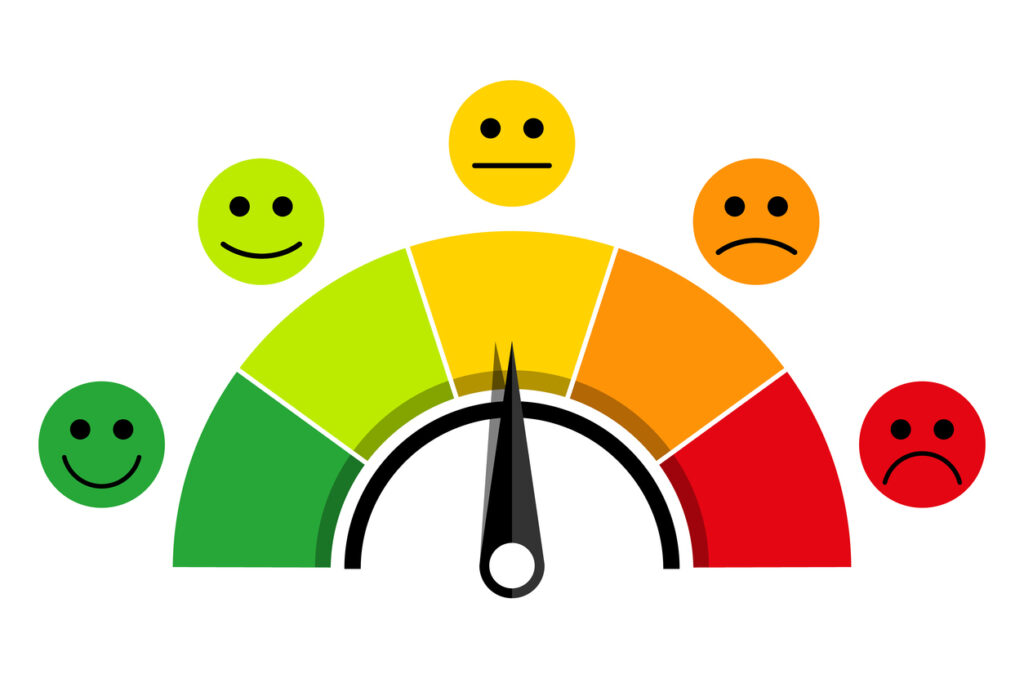Imagine if there was a way to measure levels of happiness in the workplace and improve them? Well, advances in technology are enabling employers to do just that by monitoring employee behaviour through smart devices.
Research has found that employee happiness in the workplace has a direct impact on productivity. Put simply, the happier someone is, the better they work. One study from Warwick University even quantified it – finding that being happy made people as much as 12% more productive.
A barometer for workplace happiness
Unsurprisingly, lots of companies are keen to measure workplace happiness and wellbeing for themselves, with many deploying technologies to do this.
For example, Hitachi distributed wearable devices to its staff, which monitored time spent sitting, walking, typing and talking. The company captured the data generated and used it to develop a happiness measuring algorithm.
The potential of wearables to provide a barometer for employee wellbeing goes much further though. They can give employers the ability to understand when employees are routinely working much later than other colleagues, losing sleep or moving around less.
Access to this information would allow them to pre-empt physical and even mental health issues – both of which are key factors in workplace wellbeing and productivity.
Assess your benefits offering
Data analytics can be applied to so many different aspects of the workplace and the more employers use it, the richer the wellbeing picture becomes. Benefits take-up is another powerful measure of employee wellbeing.
By measuring if employees are regularly interacting with their benefits through an online portal, it’s easier to quantifiably prove if they are getting the most from their wellness offering, and by extension their employer – meaning they are more likely to stay happy and loyal to the organisation.
For HR departments this point is key. Thomsons’ latest Global Employee Benefits Watch found that 52% of professionals cited promoting employee health and wellbeing as a top-three benefits objective, with talent retention and attraction coming in as the top objective 82%.
By measuring if employees are regularly interacting with their benefits through an online portal, it’s easier to quantifiably prove if they are getting the most from their wellness offering
Personalisation and workplace satisfaction
In today’s evolving workplace, personalisation is increasingly vital to ensure employee wellbeing. People are more likely to engage with and adopt benefits that actually make a difference to their lives.
The application of data analytics allows employers to make this difference. For example, from any employee’s wearable an employer could tell that they’re more active than most, from the company’s intranet that they’re working towards a marathon and from onboarding information that they’re several decades from retirement.
Pooling these data points, an automated solution could then prioritise a cycle to work or fitness reimbursement scheme, ahead of conventional risk benefits. This would provide employees with something genuinely relevant to their everyday life, boosting their workplace satisfaction and wellbeing.
Taking a wider view of the issues, data analytics could allow employers to spot usage trends linked to demographics. For instance, that young people typically get little value from private medical insurance (PMI).
If the data from online benefits portals confirms this, employers can make more informed decisions about where they divert spending – whether through continued provision of PMI with a focus on increased awareness or via preventative activities better to suited to the needs of younger employees.
Platforms that are visually inviting, easy to use and have the same user experience whether on desktop or mobile are much more likely to encourage employee engagement
User-friendly technology matters
But for personalisation to work effectively and play a role in optimising wellbeing, employees need to be able to access their benefits in a consistent and user-friendly way.
Whether working at home, in the office or on the train, having access to integrated and familiar technologies is critical.
It’s the same for benefits too – platforms that are visually inviting, easy to use and have the same user experience whether on desktop or mobile are much more likely to encourage employee engagement.
In fact, the GEBW report found that over a third of global employers offering employees access to benefits schemes via mobile devices received employee engagement scores of over 80%.
Strategy built on data
Beyond boosting workplace wellbeing, there’s a strong business case for employing data analytics too.
Mapping benefits data against information generated by other HCM platforms, or even by the workplace itself, can allow employers to identify gaps or trends that feed into future approaches to strategy – whether business, people or benefits.
For instance, monitoring office attendance and login rates over a year could help companies see spikes in employee sickness and any departments that are more affected than others.
If they’re able to predict when these spikes are coming they can launch targeted wellness communications in advance.
Collating and analysing data…will put companies in a strong position, allowing them to personalise each employees’ benefits experience and ensure they are supporting them in the moments that matter.
Obstacles to overcome
While there are clear advantages for employers and employees in mining data to personalise benefits to boost wellbeing and productivity, there are barriers to consider.
The most obvious is employee consent for their data being collected and used. It’s understandable that some people would feel nervous about their employer having access to personal data.
Of course, companies would need to comply with GDPR legislation, but they’d also need to dedicate time to communicating the wellbeing benefits of data collection. Mindsets won’t be changed overnight.
But despite these challenges, technological advances mean that an integrated, data-fuelled future may not be far off.
The modern workplace is harder to define than ever before and what employees want is shifting. Failing to cater to these shifts will of course impact workplace wellbeing.
Collating and analysing data from multiple touchpoints will put companies in a strong position, allowing them to personalise each employees’ benefits experience and ensure they are supporting them in the moments that matter.
This not only encourages productivity when at work, but also talent retention, attraction and overall wellbeing.






